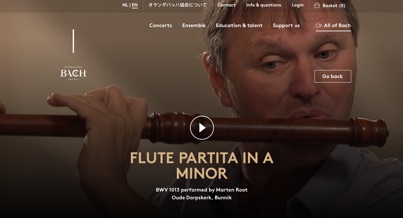

Pierre Naust, Paris, ca.1700
boxwood with silver key
threepart, a= 392 / 400 Hz

Photo: Ulrich Ehret
Fridtjof Aurin Traversos Düsseldorf
The
original of this
flute is in the Music
Instrument Museum in Berlin.
Unlike other instruments of this three-part
construction (Hotteterre, Rippert, etc.) this flute is
completely made of boxwood, without heavy ivory fittings.
As a consequence the sound is more cheerful, a little lighter and very charming.
Normally this flute is built with a middle-joint lengthened to a=392 Hz. It is also available in the original pitch of a=400 Hz.
The Naust Workshop
The history of the Naust workshop is an impressive example of the high significance of family tradition in the building of instruments throughout the 17th, 18th and 19th centuries.
Pierre Naust (ca. 1660-1709) was a contemporary of Jean Jaques Rippert and Jean de Hotteterre. Around 1692 he took over Etienne Fremont’s workshop - having worked for him beforehand - on the rue de l’Arbre Sec in Paris. After his death in 1709, the workshop continued in operation by his wife Barbe and then after 1719 by his son-in-law Delerablée as well.
In 1715 Barbe Naust, who came from the instrument makers family of Pelletier, was mentioned as “maître faiseur d’instruments de la maison du Roy“– an extremely unusual title for a woman in the 18th century. Her workshop enjoyed international recognition and possibly the first four-piece transverse flutes were made there. According to records from 1721, the ‘Dame Naust’ had equipped a flute with three ‘cors’ (corps de rechange). This is the first mention of a four-piece flute with several middle-joints.
Barbe Naust died in 1726. After Delerablée’s death in 1734 his widow married Thomas Lot, an instrument maker who had been working in the Naust workshop since roughly 1722. Through the continuation of flute building within the Lot family, the Naust workshop tradition lived on into the late 19th century.

